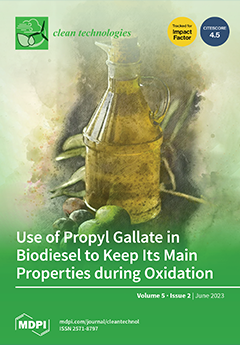A fuel mixture of ammonia and natural gas as a low-carbon alternative for future power generation and transportation is an attractive option. In this work, a 50-species reduced mechanism, NH
3NG, suitable for computational fluid dynamics simulations (CFD), is developed for ammonia–natural
[...] Read more.
A fuel mixture of ammonia and natural gas as a low-carbon alternative for future power generation and transportation is an attractive option. In this work, a 50-species reduced mechanism, NH
3NG, suitable for computational fluid dynamics simulations (CFD), is developed for ammonia–natural gas cofiring while addressing important emission issues, such as the formation of nitrogen oxides (NOx), soot, carbon monoxide, and unburnt methane/ammonia. The adoption of reduced mechanisms is imperative not only for saving computer storage and running time but also for numerical convergence for practical applications. The NH
3NG reduced mechanism can predict soot emission because it includes soot precursor species. Further, it can handle heavier components in natural gas, such as ethane and propane. The absolute error is 5% for predicting NOx and CO emissions compared to the full Modified Konnov mechanism. Validation with key performance parameters (ignition delay, laminar flame speed, adiabatic temperature, and NOx and CO emissions) indicates that the predictions of the reduced mechanism NH
3NG are in good agreement with published experimental data. The average prediction error of 13% for ignition delay is within typical experimental data uncertainties of 10–20%. The predicted adiabatic temperatures are within 1 °C. For laminar flame speed, the R
2 between prediction and data is 0.985. NH
3NG over-predicts NOx and CO emissions, similar to all other literature methods, but the NOx predictions are closer to the experimental data.
Full article





